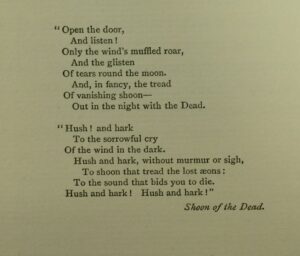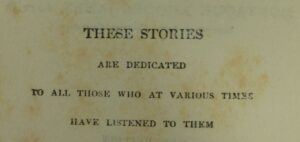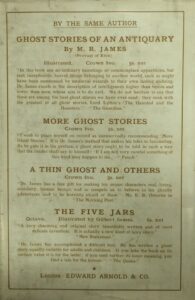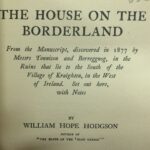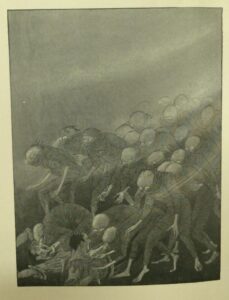If you’re interested in Poe, Bram Stoker or Le Fanu consider All Things Gothic. If you’re interested in ‘The Dance of Death’ consider ‘La Danse Macabre‘. However if you’re interested in ghost stories consider M.R. James or William Hope Hodgson.
M.R. James
Montague Rhodes James (1862–1936) is best known as M.R. James, medievalist, manuscript cataloguer and writer of ghost stories. He was also provost of King’s College, Cambridge and later Eton College. According to the Oxford Dictionary of National Biography “the intended audience of the ghost stories was the choristers of King’s College” and fans of his ghost stories included the then Prince of Wales and Theodore Roosevelt.
His ghost stories were published in a series of collections:
- Ghost Stories of an Antiquary (1904)
- More Ghost Stories of an Antiquary (1911)
- A Thin Ghost and Other Stories (1919)
- A Warning to the Curious (1925)
In 1931 an omnibus edition of his work was published as Collected Ghost Stories. The success of his stories was founded on his scholarly knowledge. James abandoned the Gothic cliches and instead created worlds that mirrored his own: his stories contain passages in Latin and references to manuscripts, books, art works and artefacts. Indeed the titles to his stories reflect this.
He created protagonists that were projections of himself: scholars of religious and cultural antiquities whose finding of a text or an object of historical value sets off a supernatural chain events. James perfected the technique of narrating supernatural events through implication and suggestion, letting the reader fill in the blanks and focusing on the mundane details of his settings and characters in order to throw the horrific and bizarre elements into greater relief.
Many of James’ stories contain an element of folk horror where uncovering what lies beneath brings trouble: digging up the whistle in “Oh Whistle and I’ll Come To You, My Lad” to discovering the treasure in a muddy alcove in “The Treasure of Abbott Thomas.”
His work was very popular in the early 20th century as evidenced by these reviews on the dust jacket of A Warning to the Curious.
William Hope Hodgson
William Hope Hodgson (1877–1918) served in the merchant navy before leaving to found a school of physical education. When this foundered in the early 20th century he turned to writing. Hodgson was a pioneer of imaginative fiction; he wrote weird tales which had monstrous creatures. Hodgson in a similar way to H.G. Wells extrapolated scientific ideas as far as the literary imagination allowed. Hodgson was killed by a shellburst near Ypres on 19 April 1918, while reporting from a forward position on the accuracy of his battery’s fire.
Hodgson’s second novel The House on the Borderland uses an account of a house ‘haunted’ by swinish invaders from another dimension as a bracketing device for a series of visions. In a similar manner to James’ bookish protagonists Hodgson’s work claims to be based on a found manuscript: a manuscript that appears to be factual and is inserted into a work of fiction in order to make it seem more authentic. Kraighten is supposed to be near Ardrahan in Co. Galway.
The Ghost Pirates is the third book in a trilogy of which The House on the Borderland is the middle volume and The Boats of the Glen Carrig is the first. In The Ghost Pirates the ‘house of the borderland’ is replaced with a ship which slips into the borderland between this world and another and is eventually invaded by its inhabitants. UCC Library’s copy has an inserted frontispiece illustrated by Sidney H. Sime (1867 – 1941). Sime was best known for fantastic and satirical artwork.
Enjoy the ghostly reading!
Bibliography
Hodgson, William Hope. The Ghost Pirates. London: Paul, 1909.
Hodgson, William Hope. The House on the Borderland. London: Chapman and Hall, 1908.
James, M.R. A Warning to the Curious and Other Ghost Stories. London: Arnold, 1925.
James, M. R. Ghost Stories of an Antiquary. London: Arnold, 1919.
Pfaff, Richard W. ‘James, Montague Rhodes (1862–1936),’ Oxford Dictionary of National Biography, Oxford University Press, 2004 [http://0-www.oxforddnb.com.library.ucc.ie/view/article/34152, accessed 27 Oct 2015]
